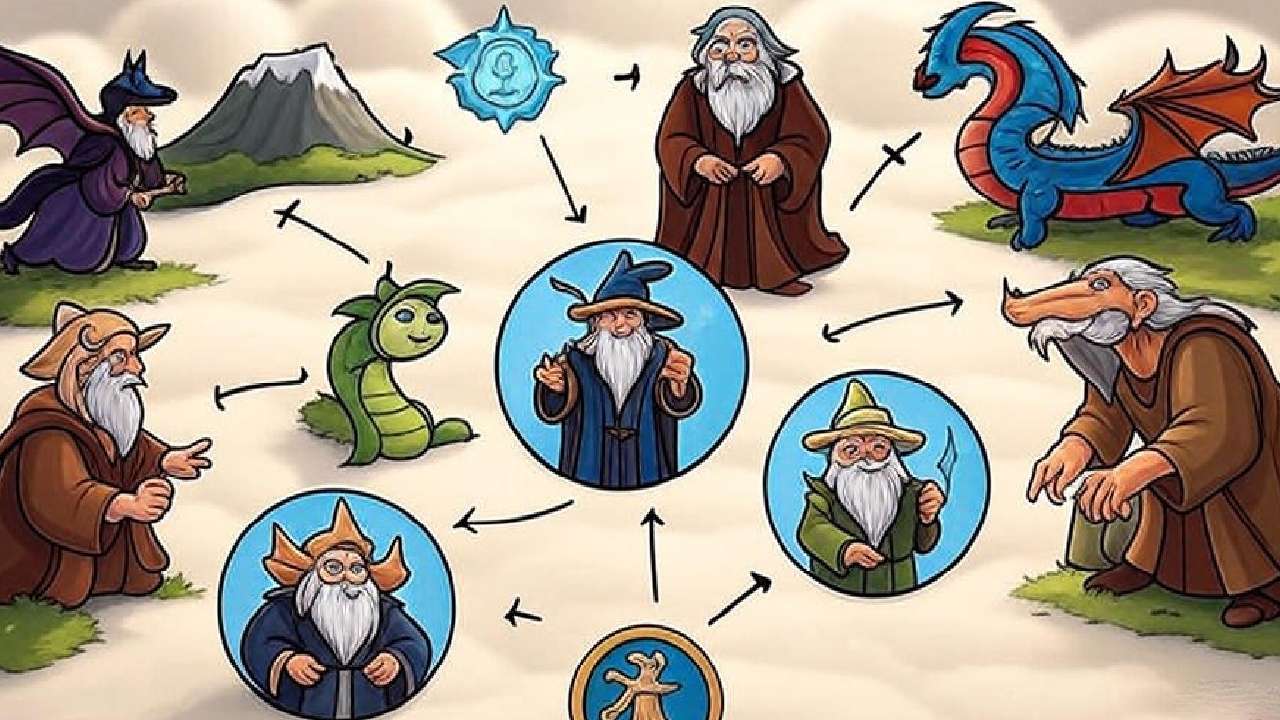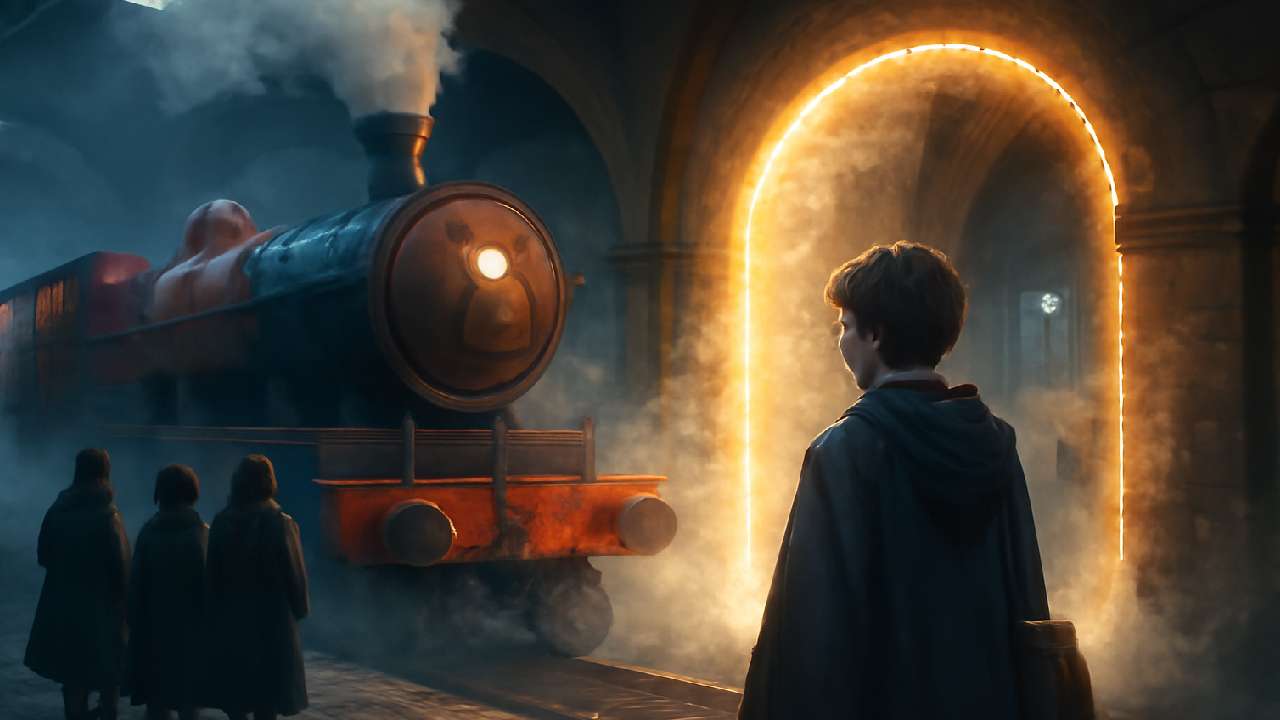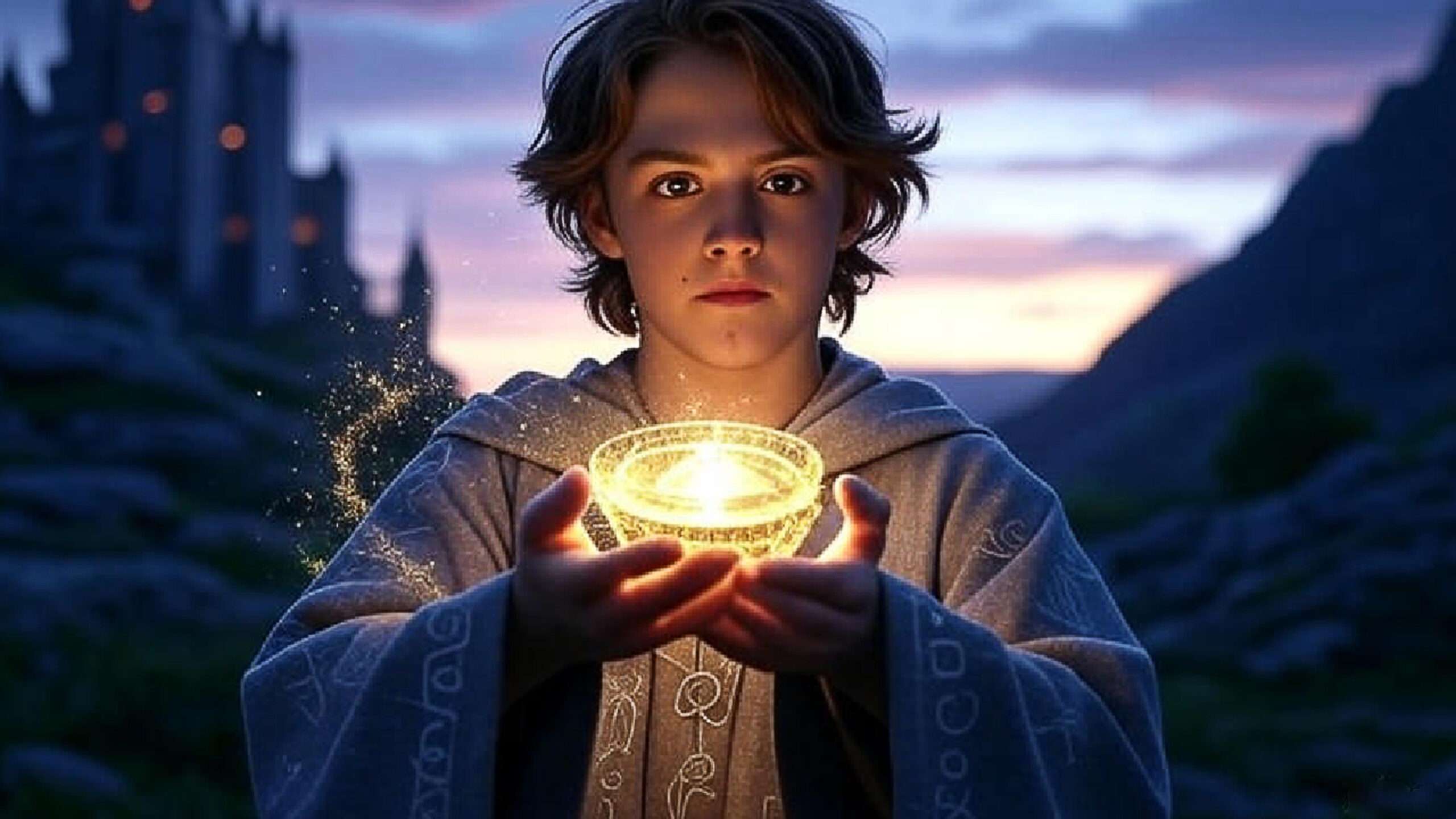
Harry Potter and the Hero's Journey: How the Classic Story Structure Drives Character Growth and Adventure
Have you ever wondered why Harry Potter feels like a story that truly speaks to you? Why does its plot hook readers of all ages and backgrounds? The answer lies in the timeless structure of the Hero’s Journey — a storytelling framework that taps into deep, universal themes of growth, challenge, and triumph. 🧙♂️
In Harry Potter and the Hero’s Journey, this classic structure isn’t just a backdrop; it drives the very essence of Harry’s character growth and the adventure he embarks on. But how exactly does this age-old pattern create a relatable and thrilling tale for readers? And how can understanding it enhance our connection to the characters and their world?
In this article, we’ll unravel how Harry Potter follows the Hero’s Journey, making it one of the most compelling narratives ever written. By the end, you’ll not only understand why this structure works so powerfully in the wizarding world but also discover how it can inspire your own personal journey toward growth and self-discovery. Let’s dive in! 🌟
Table of Contents
ToggleUnderstanding the Hero’s Journey – A Quick Overview 🛤️
The Hero’s Journey is a narrative structure that has been used for centuries, tracing the transformative journey of a hero from their humble beginnings to greatness. First introduced by mythologist Joseph Campbell in his book The Hero with a Thousand Faces, the concept of the Hero’s Journey has since become a powerful framework for storytelling across cultures and time periods.

At its core, the Hero’s Journey is a blueprint that outlines the stages a hero typically goes through in their quest for transformation. It speaks to universal human experiences and emotions, making it highly relatable. The structure isn’t just confined to mythology—it’s present in countless modern stories, from movies to books to television shows. And one of the most famous examples is, of course, Harry Potter.
Campbell’s Hero’s Journey is broken down into 12 distinct stages, each representing a significant moment in the hero’s path. Let’s break these down more broadly, to help you understand the framework that underpins Harry Potter and countless other classic tales.
- The Ordinary World: Every hero starts in a place that is familiar and comfortable. It represents the hero’s “normal life” before they are called to adventure. In Harry Potter, this is represented by Harry’s life with the Dursleys—where he feels isolated and unimportant. It’s not glamorous, and it’s definitely not magical.

- The Call to Adventure: This is the moment when something disrupts the hero’s ordinary life. They are called to step out of their comfort zone and face a challenge. For Harry, this moment occurs when he receives his letter to Hogwarts, inviting him into the magical world. It’s an opportunity that will change his life forever.
- Refusal of the Call: Initially, heroes often hesitate or refuse the call to adventure. This stage reflects the hero’s inner doubt, fear, or reluctance to change. Even after receiving the letter, Harry is initially in denial, unable to fully grasp the magical world awaiting him. It’s a natural response to uncertainty, making Harry a relatable character.
- Meeting the Mentor: No hero’s journey is complete without a mentor who guides them along the way. In Harry Potter, Hagrid plays this role, introducing Harry to the wizarding world and providing wisdom that helps Harry begin his journey. The mentor prepares the hero for what lies ahead.
- Crossing the Threshold: This is the point of no return, where the hero fully steps into the unknown. For Harry, this moment happens when he boards the Hogwarts Express, leaving behind his ordinary life and entering a world of magic and mystery. It’s a symbolic departure from the known and the beginning of an extraordinary adventure.

- Tests, Allies, and Enemies: The hero faces various trials and tests in this phase, which help them grow and learn new skills. In Harry Potter, this stage is represented by Harry’s encounters with challenges like Quidditch, the magical creatures, and the friendships he builds with Ron and Hermione. The trio becomes Harry’s allies, while characters like Draco Malfoy serve as his enemies.
- Approach to the Inmost Cave: This stage represents the hero’s preparation for the greatest challenge yet. It’s a moment of reflection before the final confrontation. In Harry Potter, this stage is reflected in Harry’s preparations to confront the dark forces at Hogwarts—whether it’s protecting the Philosopher’s Stone or preparing for the dangers that lie ahead.
- The Supreme Ordeal: This is the pivotal moment in the Hero’s Journey when the hero faces a major crisis, often a life-or-death situation. For Harry, this is his confrontation with Voldemort in the first book and later in the series. It’s the ultimate test that forces Harry to summon all of his strength and skills.

- The Reward: After the ordeal, the hero typically earns something valuable, whether it’s a physical prize or newfound wisdom. In Harry Potter, Harry’s reward often comes in the form of lessons learned, new friendships forged, and the magical items that help him in later adventures. But most importantly, Harry gains the confidence and knowledge needed for the next stage of his journey.
- The Road Back: As the hero begins to return to their ordinary world, they often face new challenges. This represents a time of reckoning or reconciliation. For Harry, this stage takes place when he returns to Hogwarts after each of his major battles, with new understanding and a sense of responsibility.

- Resurrection: The final test in the Hero’s Journey represents the hero’s rebirth—where they must face a final challenge that redefines who they are. Harry’s final showdown with Voldemort in the later books represents this stage. It’s his ultimate moment of transformation and self-discovery.
- Return with the Elixir: The hero returns to their world, now changed and armed with wisdom or power that can benefit others. For Harry, this represents the peace and strength he brings back to his world after defeating Voldemort and breaking the cycle of evil. He’s no longer the innocent boy he once was; he’s a hero, capable of guiding others.
Harry Potter and the Hero’s Journey – The Phases in Action 🧙♂️✨
In Harry Potter, J.K. Rowling masterfully weaves the Hero’s Journey into Harry’s story, making it not just a magical adventure, but a deeply relatable tale of personal growth. Let’s break down how the 12 stages of the Hero’s Journey unfold through Harry’s eyes and how each phase drives his character development.
1. The Ordinary World 🌍
Harry’s journey starts in a place of neglect and isolation. Living with the Dursleys, he’s treated poorly, unaware of his true identity and potential. This phase sets up Harry as an ordinary boy, unaware of the extraordinary life awaiting him. The reader can immediately relate to Harry’s sense of being “out of place,” which makes his eventual transformation even more impactful.
2. The Call to Adventure ✉️
The Call to Adventure is a pivotal moment where the hero is invited to step out of their familiar world. For Harry, this occurs when he receives his Hogwarts letter, informing him of his magical heritage. It’s an exciting moment, yet Harry doesn’t immediately grasp the magnitude of this invitation. Much like anyone encountering a big change, Harry’s first reaction is uncertainty, making his eventual decision to embrace the magical world all the more compelling.
3. Refusal of the Call 😟
Harry’s initial refusal of the call comes when he doesn’t believe in magic and wishes to stay in the mundane world of the Dursleys. Despite the magical invitations, it takes Hagrid’s arrival to force Harry into the world of witches and wizards. This phase reflects how we often doubt new opportunities or shy away from change, making it easy for readers to empathize with Harry’s hesitation.
4. Meeting the Mentor 🧙♂️
Harry meets his mentor, Hagrid, who introduces him to the wizarding world. Hagrid not only brings Harry into this new world but also helps him navigate through it. From shopping for his school supplies to learning about the magical creatures, Hagrid is the supportive guide Harry needs. Just like Harry, we all need mentors—people who guide us, share their wisdom, and help us see possibilities we didn’t know existed.
5. Crossing the Threshold 🚂
The moment Harry boards the Hogwarts Express, he crosses the threshold from the ordinary world into the extraordinary world of magic. It’s here that the adventure truly begins. The threshold symbolizes stepping out of our comfort zones, embracing the unknown, and accepting the challenges ahead. For Harry, this is the moment when he leaves behind the dull life with the Dursleys and enters a realm filled with limitless potential.
6. Tests, Allies, and Enemies ⚔️
At Hogwarts, Harry faces numerous tests: learning spells, taking exams, and mastering Quidditch. He also builds alliances with key characters like Hermione and Ron, who help him along the way. Together, they face enemies like Draco Malfoy, and later, the darker forces embodied by Voldemort. This phase teaches Harry the value of friendship, teamwork, and perseverance, while also highlighting the enemies who challenge him to grow stronger.
7. Approach to the Inmost Cave 🏰
As the story progresses, Harry and his friends approach their greatest challenge yet—the Philosopher’s Stone, hidden within Hogwarts. This is a moment of reflection and preparation. Harry’s growth up to this point helps him face the unknown with confidence. The “Inmost Cave” represents the hero’s ultimate test, where they must confront their greatest fears and challenges.
8. The Supreme Ordeal 🔥
The Supreme Ordeal in Harry’s journey is his confrontation with Professor Quirrell, who is revealed to be working for Voldemort. In this intense moment, Harry faces life-threatening danger, ultimately realizing that the power of love and sacrifice is stronger than pure evil. This phase is crucial, as it tests Harry’s inner strength and forces him to confront the greatest fears—death and darkness.
9. The Reward 🏆
Having defeated Quirrell and saved the Philosopher’s Stone, Harry’s reward isn’t just the Stone, but the valuable lessons learned about loyalty, courage, and love. Harry’s reward is also the realization that he has a greater purpose in the magical world, and that he is capable of achieving greatness. It’s a moment of inner victory that will fuel him for future challenges.
10. The Road Back 🚶♂️
Harry’s journey back to the ordinary world comes when he returns home for the summer after his first year at Hogwarts. However, the journey isn’t over—Harry’s return signifies a time of reflection, and yet, more challenges are on the horizon. This stage highlights that even after achieving success, the road to self-discovery is ongoing, and new adventures await.

11. Resurrection 🔄
In the later books, particularly when Harry faces Voldemort again, he goes through a final transformation. His battle with Voldemort in Harry Potter and the Goblet of Fire represents the ultimate test—a resurrection of sorts, where Harry faces his deepest fears and comes out stronger. This phase shows Harry’s growth, both emotionally and physically, as he becomes the true hero of the wizarding world.
12. Return with the Elixir 🏅
In the final stages of Harry’s journey, he returns to the wizarding world, not as the boy who once lived under the stairs but as a fully transformed hero. In the end, he carries the wisdom, strength, and hope needed to defeat the forces of evil. His return with the “elixir” is not just about physical victory, but about the internal transformation that enables him to bring peace and justice to the wizarding world.
Character Growth Through the Hero’s Journey 🧙♂️💫
In Harry Potter, character growth is not just about learning spells or defeating villains—it’s about personal transformation. As Harry moves through the stages of the Hero’s Journey, his character evolves in ways that resonate with readers on a deep level. Let’s break down how each stage of the Hero’s Journey contributes to Harry’s growth and how these phases can inspire personal development in our own lives.
1. The Ordinary World – Harry’s Starting Point 🌍
Harry begins as an ordinary boy, living with the abusive Dursleys and unaware of his true identity. He’s treated poorly and doesn’t know that he is destined for greatness. This “ordinary world” is essential because it shows that even heroes start from humble beginnings. Readers can relate to Harry’s feeling of being out of place, which sets the stage for his transformation.
2. The Call to Adventure – Embracing the Unknown ✨
When Harry receives his Hogwarts letter, he’s thrust into a new world that challenges everything he’s ever known. At first, he resists. It’s a huge shift, and Harry doesn’t know what to expect. This phase is crucial for Harry’s growth, as he moves from ignorance to discovery.
3. Meeting the Mentor – Learning and Growing 🧙♂️
Hagrid plays the role of Harry’s mentor, introducing him to the magical world and helping him make sense of the new challenges he faces. This relationship is vital for Harry, as it provides him with the tools and confidence to navigate his new world.
4. Tests, Allies, and Enemies – Building Strength 💪
At Hogwarts, Harry faces tests, builds alliances, and makes enemies. Each challenge teaches him valuable lessons, like the importance of friendship, trust, and perseverance. Ron and Hermione become his closest allies, while characters like Draco Malfoy serve as rivals that push Harry to grow stronger.
5. The Supreme Ordeal – Facing Fear and Danger ⚔️
Harry’s first big test comes when he confronts Professor Quirrell and Voldemort in the Philosopher’s Stone. It’s a life-or-death moment that forces Harry to confront his deepest fears. Despite the danger, Harry shows immense courage. He learns that love, loyalty, and selflessness are his greatest strengths.
6. The Reward – Gaining Wisdom and Confidence 🏆
After overcoming the Supreme Ordeal, Harry’s reward is not just the Philosopher’s Stone, but the wisdom he gains about himself and the magical world. This phase shows how growth isn’t about accumulating trophies, but about the internal change that makes us stronger.
7. The Road Back – Returning Changed 🛤️
In the later books, Harry’s journey back home isn’t a return to the status quo. He’s a changed person, armed with the wisdom and experience needed to face new challenges. This phase reflects how growth doesn’t always mean returning to where you started—it often means moving forward with new knowledge and strength.
8. Resurrection – A Final Test of Strength 🔄
Harry’s final confrontation with Voldemort represents the ultimate resurrection. He faces his most dangerous challenge yet, but this time he is no longer the boy who didn’t understand his power. He’s grown into a true hero, willing to make the ultimate sacrifice for the greater good.
9. Return with the Elixir – Sharing Wisdom with Others 💡
At the end of the series, Harry returns to the wizarding world, having gained both wisdom and peace. He carries with him the lessons he’s learned throughout his journey, ready to share them with others. He’s no longer the unsure boy who entered Hogwarts—he’s a confident, self-assured hero who understands the value of love, friendship, and sacrifice.
The Importance of the Hero’s Journey in Storytelling 📖✨
The Hero’s Journey isn’t just a storytelling technique—it’s a blueprint that connects deeply with audiences, making the story both engaging and emotionally resonant. In Harry Potter, J.K. Rowling masterfully uses this structure to craft a tale of growth, transformation, and adventure. But what makes the Hero’s Journey so vital to storytelling, and why does it work so well? Let’s explore the key reasons why this structure is essential to the magic behind Harry Potter and many other iconic stories. 🧙♂️
1. It Resonates with Universal Human Experiences 🌍
The Hero’s Journey taps into universal emotions and experiences—growth, challenge, fear, and triumph—that everyone can relate to. Just like Harry, we all face moments of doubt, need guidance from mentors, and must confront difficult choices. This shared human experience makes the Hero’s Journey so compelling.
Practical Insight: When you structure your own stories—whether personal or professional—using the Hero’s Journey framework, you create narratives that speak directly to universal emotions, drawing your audience in and making them feel connected to the journey.
2. It Builds Emotional Engagement 💖
One of the reasons the Hero’s Journey is so powerful is its ability to create deep emotional engagement. The stages of the journey—especially the trials and the ultimate confrontation with the villain—put the hero (and by extension, the audience) through an emotional rollercoaster. Harry’s growth as he faces hardship and loss mirrors our own struggles, making us feel like we are growing with him.
Practical Insight: Whether you’re writing, marketing, or telling a story in any format, focusing on emotional highs and lows can keep your audience engaged and invested in the outcome. Use the Hero’s Journey to craft emotionally charged narratives that hook your audience.
3. It Provides Structure for Complex Narratives 🏗️
The Hero’s Journey offers a clear and well-defined path for structuring a narrative. This structure gives storytellers a map to follow, ensuring that the plot unfolds in a way that builds tension and culminates in a rewarding resolution. In Harry Potter, we see this in action: each book follows a predictable structure that leads to a satisfying arc for both Harry and the world around him.
Practical Insight: If you’re struggling with organizing your story or content, consider using the Hero’s Journey to provide a framework. This structure will help guide your narrative and make it feel more cohesive, ensuring that each moment contributes to the overall journey.
4. It Keeps Audiences Hooked with Tension and Resolution 🔥
The Hero’s Journey is built on tension, challenges, and conflict, which keeps audiences hooked. The “Supreme Ordeal” and “Resurrection” stages are crucial in maintaining high stakes, and this cycle of conflict and resolution leads to satisfying, transformative outcomes. As Harry faces ever-increasing danger and ultimately triumphs, the reader feels the stakes are real, making the payoff even sweeter.
Practical Insight: Whether in fiction, business storytelling, or content marketing, introducing tension and conflict in a story keeps your audience invested. Use the Hero’s Journey to create suspense that keeps people coming back for more, knowing there will be a resolution that feels earned.
5. It Offers a Blueprint for Character Development 🌱
Character growth is at the heart of the Hero’s Journey. Harry evolves from a timid, uncertain boy into a brave, self-assured hero. This development happens through every stage, from meeting mentors to facing life-threatening challenges. By seeing Harry’s transformation, we’re reminded that growth is possible—even for the most unlikely heroes.
Practical Insight: If you’re working on a character-driven story or project, the Hero’s Journey is a great way to map out your character’s evolution. Think of each stage as a step in your character’s growth, showing how their inner transformation mirrors the events happening around them.
6. It Makes Stories Timeless and Relatable ⏳
The Hero’s Journey structure is timeless because it reflects fundamental human growth. While the settings and plots may change, the emotional beats remain the same—struggling with self-doubt, overcoming obstacles, learning from mentors, and achieving triumph. This timeless nature is why stories like Harry Potter continue to captivate generations of readers.
Practical Insight: Whether you’re crafting a story for your audience or thinking about your own personal journey, aligning your narrative with timeless themes like transformation, resilience, and growth can make your story more powerful and universally appealing.
Applying the Hero’s Journey to Your Own Life 🌟
The Hero’s Journey isn’t just for fictional characters like Harry Potter—it’s a powerful framework that can help you navigate your own life’s challenges and transformations. By understanding this narrative structure, you can gain valuable insights into your personal growth, overcome obstacles, and embrace your own journey of self-discovery. Let’s explore how you can apply the stages of the Hero’s Journey to your real-life path. 🚀
1. The Ordinary World – Where You Start 🏡
Just like Harry begins in the ordinary world of the Dursleys, we all start somewhere. It’s important to recognize where you are right now, even if it feels “normal” or uneventful. Your current situation, whether it’s at school, work, or in your personal life, is your foundation. Embrace it—it’s the starting point for the adventure you’re about to take.
Action Tip: Reflect on your current “ordinary world.” What’s your status quo? Identify areas of your life that feel stagnant or unfulfilling. Recognizing where you are is the first step in your personal transformation.
2. The Call to Adventure – Embrace New Opportunities 📩
The “Call to Adventure” in your life could come in many forms: a new job offer, a chance to travel, or even a personal challenge that forces you to step out of your comfort zone. Like Harry receiving his Hogwarts letter, it may feel daunting at first. But this is your invitation to growth and change.
Action Tip: Don’t shy away from new opportunities. If a challenge or new path appears, consider how it could transform you. Trust that stepping outside your comfort zone is necessary for growth.
3. Refusal of the Call – Overcome Self-Doubt 😕
At some point, you may feel unsure about answering the call to adventure, just like Harry initially refused to accept the magical world. Fear, doubt, and uncertainty are normal reactions when facing something unknown. However, it’s important to push through that fear to truly grow.
Action Tip: When faced with self-doubt, ask yourself: What is the worst that could happen? How will facing this fear help me grow? Remember, the biggest opportunities often come after overcoming the greatest resistance.
4. Meeting the Mentor – Seek Guidance 🧙♂️
Just as Harry meets Hagrid, you too need mentors—people who can provide wisdom, encouragement, and perspective. Whether they are friends, family, colleagues, or professional coaches, mentors can guide you through the unknown and help you learn from their experiences.
Action Tip: Identify mentors in your life who can offer advice and support. Don’t be afraid to seek guidance when you feel lost or uncertain. The right mentor can make all the difference in your journey.
5. Crossing the Threshold – Take the Leap 🚪
The moment you decide to step into the unknown is your “Crossing the Threshold.” For Harry, it was boarding the Hogwarts Express. For you, it might be taking a big risk—like switching careers, starting a business, or relocating. This is the moment when you fully commit to your adventure.
Action Tip: Think about the leap you’ve been hesitant to take. What’s stopping you? Take the first step, no matter how small. Crossing that threshold is key to transforming your life.
6. Tests, Allies, and Enemies – Grow and Build Relationships 🤝
As you venture through your personal journey, you’ll encounter tests (challenges), allies (friends or colleagues), and enemies (obstacles or negative influences). These experiences will teach you valuable lessons and push you toward growth.
Action Tip: Embrace challenges as opportunities to learn. Build strong relationships with those who support your growth, and avoid toxic influences that hinder your progress.
7. The Supreme Ordeal – Confront Your Biggest Challenge ⚔️
The “Supreme Ordeal” is your biggest test, just like Harry’s fight with Voldemort. It’s the challenge that forces you to dig deep, test your limits, and discover your inner strength. Whether it’s overcoming a personal fear or dealing with a major life crisis, this is the moment that will define your journey.
Action Tip: When faced with your supreme ordeal, remember that you have the strength to overcome it. Break the challenge down into smaller steps and focus on one task at a time. Your resilience will carry you through.
8. The Reward – Celebrate Your Growth 🏆
After overcoming your supreme ordeal, you’ll earn your reward. This isn’t always a physical prize—it might be newfound confidence, skills, or clarity about your purpose. Like Harry’s deeper understanding of his role in the magical world, your reward will be an essential part of your transformation.
Action Tip: Take a moment to celebrate your progress. Reflect on what you’ve learned and how far you’ve come. This is a time for self-recognition and acknowledgment of your growth.
9. The Return – Share Your Wisdom with Others 🌍
The final stage of the Hero’s Journey is returning home, but you’re no longer the same person who started the journey. Now, you have wisdom to share with others. This might involve mentoring others, leading a team, or simply applying your newfound skills in your day-to-day life.
Action Tip: As you return from your personal journey, consider how you can share what you’ve learned with others. Teaching or mentoring can be a powerful way to solidify your growth and give back to the community.
As we’ve seen, Harry Potter is more than just a magical adventure—it’s a powerful example of the Hero’s Journey, a timeless framework that guides Harry through trials, transformation, and triumph. But here’s the magic: this journey isn’t exclusive to wizards or fictional characters. It’s a blueprint that we can all apply to our own lives. 🌟
Just like Harry, we all face challenges, moments of doubt, and opportunities for growth. And like the greatest heroes, we can embrace the unknown, learn from our mentors, and rise above obstacles to become stronger versions of ourselves. Whether you’re starting a new chapter, facing a difficult decision, or simply trying to make sense of life’s twists and turns, remember—your Hero’s Journey is unfolding, too. 🚀
So, the next time you find yourself stepping into the unknown or facing your “Supreme Ordeal,” think of Harry. Know that just like him, you’re destined to grow, learn, and come out the other side with wisdom to share. ✨
The magic of the Hero’s Journey is not just in the story—it’s in your story. Embrace it, and let your own adventure begin. 🌟🧙♂️

Frequently Asked Questions (FAQs)
1. What is the Hero’s Journey in Harry Potter?
The Hero’s Journey is a storytelling framework that outlines the transformation a hero undergoes in their adventure. In Harry Potter, Harry follows this path by receiving a call to adventure (his invitation to Hogwarts), facing trials, making allies, and ultimately confronting and defeating Voldemort. This structure helps shape Harry’s growth and development throughout the series.
2. How does the Hero’s Journey impact Harry Potter’s character development?
The Hero’s Journey plays a crucial role in Harry’s growth, turning him from a lonely, unaware boy into a confident and selfless hero. Through each stage of the journey, like facing challenges and discovering his purpose, Harry learns valuable life lessons, such as the importance of friendship, courage, and love. This makes his character arc deeply relatable and inspiring.
3. Why is the Hero’s Journey important in storytelling?
The Hero’s Journey resonates with audiences because it mirrors real-life experiences of growth, struggle, and triumph. It provides a clear structure that helps writers create compelling and emotionally engaging narratives, making it easier for audiences to connect with the hero and their journey. This universal appeal is why it’s widely used in literature and film.
4. How does the Hero’s Journey apply to real life?
The Hero’s Journey can be applied to your own life by recognizing the stages of growth you go through when facing challenges. Just like Harry, you may receive a “call to adventure” (a new opportunity), face fears, and overcome obstacles that lead to personal transformation. It’s a way to understand your journey and embrace the growth that comes from it.
5. What are the key stages of the Hero’s Journey in Harry Potter?
The key stages in Harry Potter include:
- The Call to Adventure (Harry receives his letter to Hogwarts)
- Refusal of the Call (Harry’s initial doubt and resistance)
- Meeting the Mentor (Hagrid introduces Harry to the magical world)
- Crossing the Threshold (Harry enters Hogwarts)
- The Supreme Ordeal (Harry’s confrontation with Voldemort)
These stages mirror Harry’s transformation throughout the series, helping him evolve into a true hero.
6. How does Harry Potter's Hero’s Journey compare to other heroes in fiction?
Like many classic heroes, Harry’s journey follows a similar arc: an ordinary individual is called to an extraordinary adventure, faces trials, and ultimately returns transformed. However, Harry’s journey is unique because it is heavily influenced by themes of love, sacrifice, and friendship, making it particularly relatable and emotional for readers of all ages.
7. What role do mentors play in Harry Potter’s Hero’s Journey?
Mentors are crucial in the Hero’s Journey, providing guidance, wisdom, and support. In Harry Potter, characters like Hagrid, Dumbledore, and even Hermione serve as mentors, helping Harry navigate the magical world and prepare for his ultimate challenges. Their wisdom equips Harry with the tools and knowledge needed for his personal growth.
8. Can the Hero’s Journey framework be used to create my own stories?
Absolutely! The Hero’s Journey is a versatile structure that can be applied to any story. Whether you’re writing a novel, creating content, or working on personal goals, you can use its stages to map out character development, create engaging plots, and deliver powerful resolutions. It’s a great tool for crafting compelling and emotionally resonant narratives.
